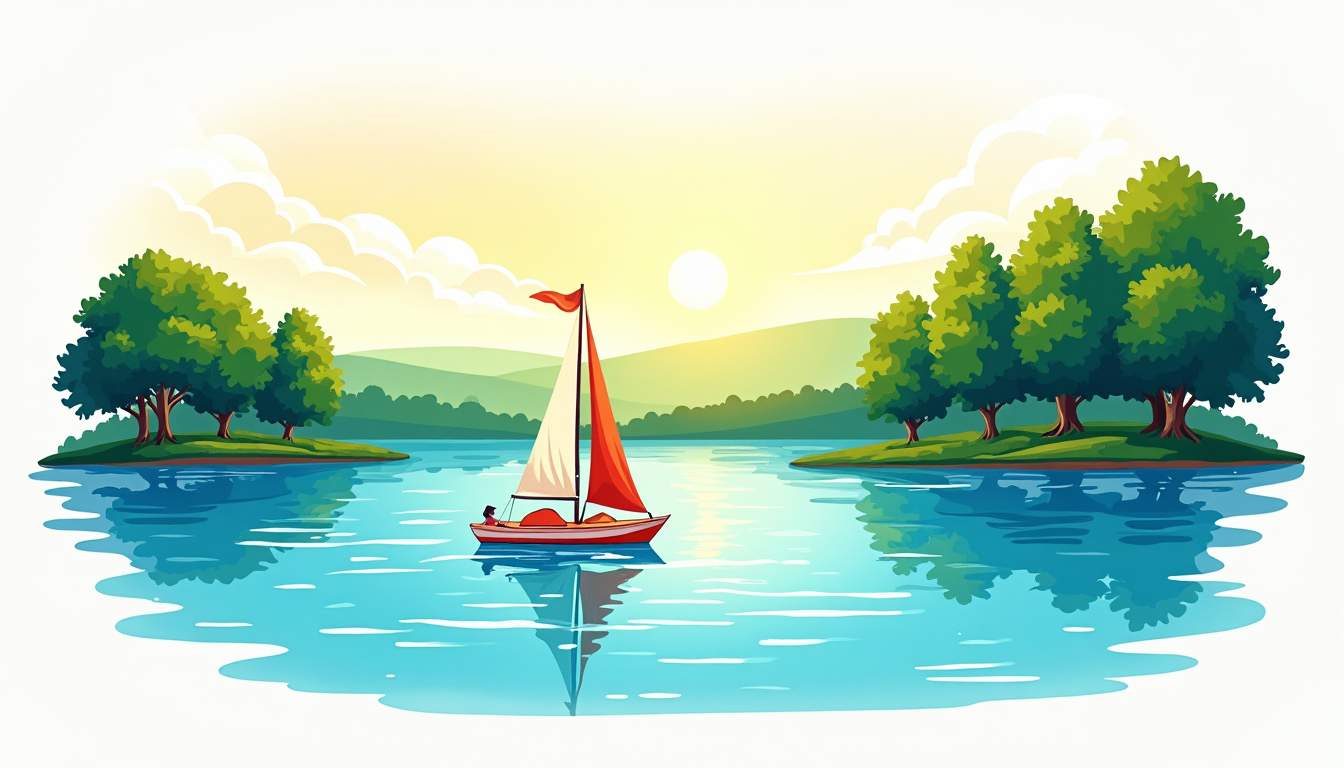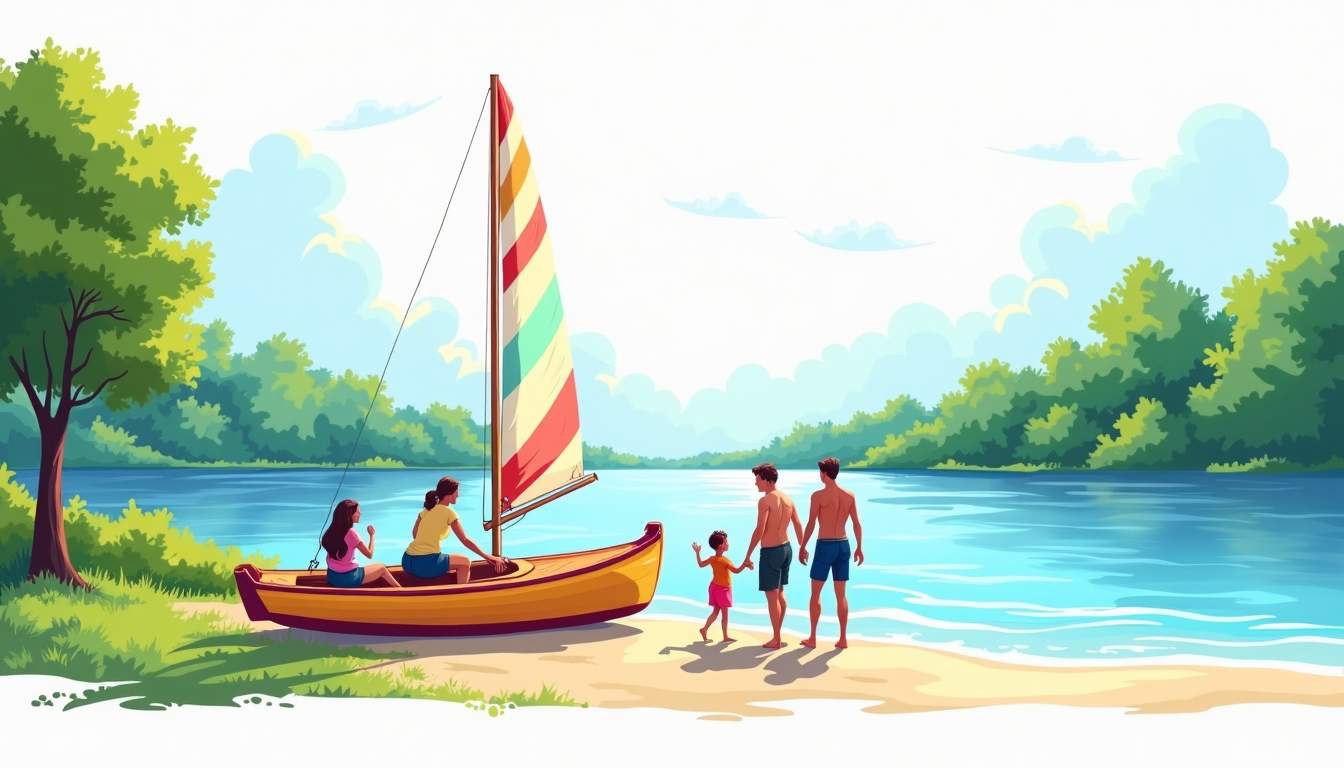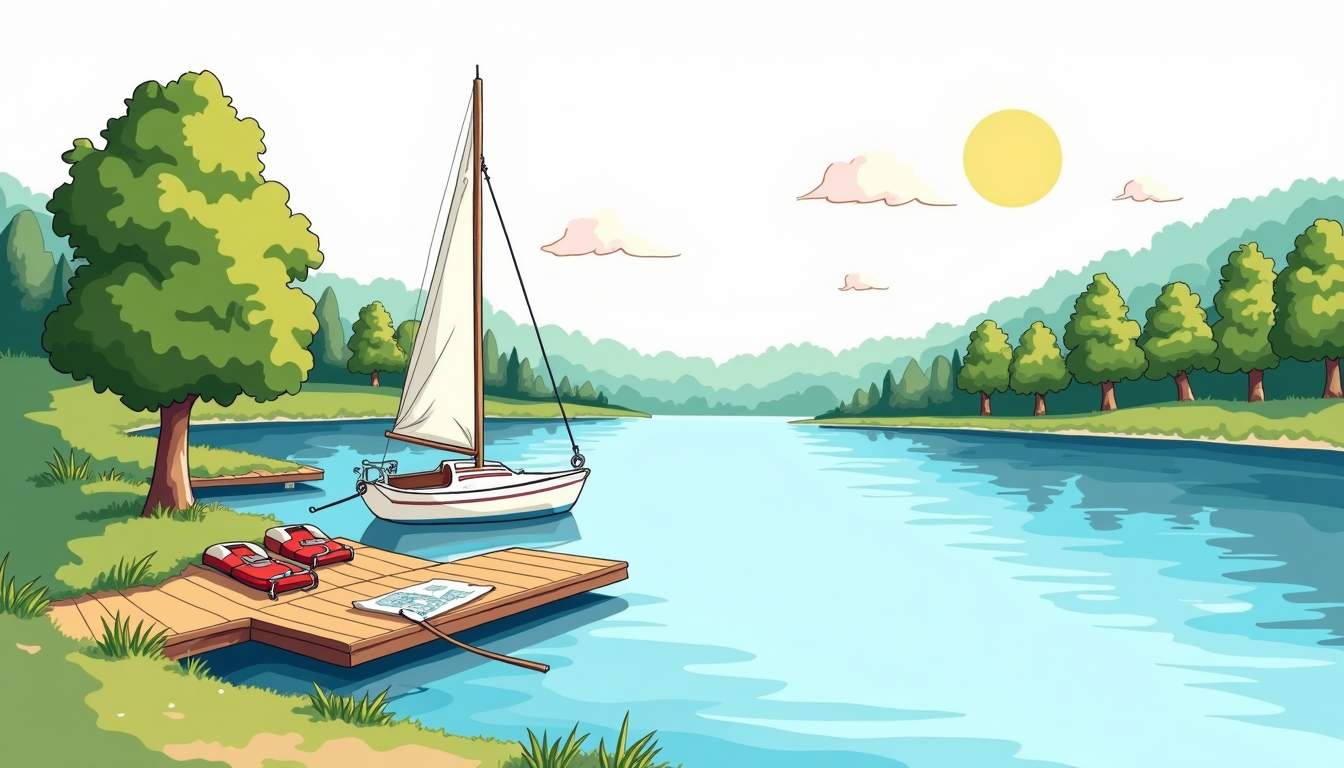
Summer days, warm breezes, and open water combine to create some of the most memorable outdoor experiences. Whether the plan is a leisurely cruise around a nearby lake, a spirited day of watersports, or an overnight trip along a coastal stretch, a little preparation unlocks more enjoyment and fewer surprises. The following guidance covers planning, safety, equipment, destination ideas, activities on the water, and responsible boating practices so that each outing becomes an adventure worth repeating.
A successful boating day starts before leaving the dock. Check weather forecasts, tides (if relevant), and local notices to mariners. Life is more relaxed when departures are timed to avoid afternoon storms or strong tidal currents, and when the itinerary accounts for fuel stops, refueling, and safe anchoring spots for a swim or picnic.

Create a flexible plan that balances structure with room for spontaneous detours. Identify primary and secondary destinations, mark safe harbors or designated anchorages along the route, and estimate travel times based on boat speed and conditions. A realistic timeline reduces stress and keeps everyone comfortable, especially families with young children or companions who prefer gentler pacing.
Before setting off, ensure the boat is well-equipped with essential safety gear such as life jackets, signaling devices, and a first aid kit. Double-check that the fuel tank is full, batteries are charged, and all navigation equipment is functioning properly. These preparations not only protect everyone on board but also provide peace of mind so the focus can remain on enjoying the day.
Equally important is packing appropriate clothing and supplies. A mix of sun protection, waterproof layers, and extra food and water can make a significant difference when unexpected weather changes occur or when delays happen. Incorporate entertainment options for long stretches on the water, such as fishing gear, snorkeling equipment, or books to keep all guests engaged and comfortable.
Weather can change quickly in many boating regions. Consult multiple sources—local marine forecasts, radar apps, and buoy reports—early in the morning and again before launching. Wind direction and strength, wave heights, and visibility are primary factors that influence comfort and safety. If a forecast suggests sudden squalls or sustained high winds, consider postponing the trip or choosing a more sheltered waterway.
A float plan is a simple but essential safety habit. Share the intended route, departure and expected return times, passenger names, and contact information with a trusted friend or family member. Include details about the boat—registration number, radio channel, and planned stops. If the trip changes, send an update. A clear float plan helps search-and-rescue efforts if an unexpected problem arises.
In addition to sharing your float plan, consider using digital tracking devices such as AIS transponders or smartphone apps that allow loved ones to monitor your progress in real time. While technology can never replace good judgment and thorough preparation, these tools add an extra layer of security. Remember to regularly check in via radio or phone during the trip to affirm that everything remains on track.
Safety equipment is non-negotiable. Confirm there are enough U.S. Coast Guard–approved life jackets for everyone aboard and inspect them for wear, proper fit, and serviceability. Invest in life jackets designed for the activities planned: inflatable types for fit and comfort in calm conditions, or inherently buoyant models for rougher water and rapid response.

Beyond life jackets, equip the boat with basic emergency and navigation tools: throwable flotation devices, visual distress signals, a functioning horn or whistle, an anchor with adequate rode, and a well-stocked first-aid kit. Familiarize everyone on board with the location and use of this equipment before casting off.
Carry at least one reliable means of communication—VHF radio is standard for coastal and large-lake boating, while a charged mobile phone may suffice for shorter, inland trips where coverage is dependable. Consider a portable battery bank, a waterproof phone case, and a personal locator beacon (PLB) or satellite messenger for extended or remote trips. GPS devices and chartplotters can simplify navigation, but always carry up-to-date paper charts as a backup.
Conduct a quick walkaround before leaving the dock: check fuel and oil levels, battery charge, bilge pump operation, navigation lights, and bilge for leaks or excess water. Secure loose items, stow gear to prevent tripping, and confirm the engine runs smoothly. Promptly addressing minor mechanical issues reduces the risk of a major breakdown while underway.
Destination choice influences scenery, activities, and level of difficulty. Lakes and calm bays offer relaxed outings ideal for families, while open coastline and larger rivers appeal to experienced boaters seeking longer cruises, fishing opportunities, and anchoring near remote beaches. Select locations that match the skill level and interests of the group.
When mapping a route, consider proximity to fuel, shelter, and emergency services. Popular boating areas can become crowded on holidays and weekends; arriving early or cruising midweek often provides calmer waters and easier anchoring. Research local regulations, speed zones, and wildlife protections to ensure a safe and legal trip.
Explore a peninsula dotted with islands for sheltered channels and secluded coves, ideal for picnics and snorkeling. A loop around a well-known lake with designated swimming areas combines landmarks and social boating. For coastal adventurers, chart a course that includes small harbors with restaurants, or aim for an overnight anchorage under starlight to experience the sea at a slower pace.
When passengers include beginners or young children, plan shorter legs between stops, choose protected waters, and prioritize frequent breaks. For experienced crews, longer passages, complex navigational challenges, or a multi-day itinerary with varied anchoring conditions can enrich the experience. Always match the route to the competence and comfort of the entire group.
Boating provides a platform for many activities beyond cruising. Swimming, snorkeling, fishing, paddleboarding, and waterskiing are common summer pursuits. Each adds variety and makes the day more memorable. Organize a loose schedule so multiple activities can be enjoyed without feeling rushed.
Select calm, shallow spots away from high-traffic channels and engine propellers. Swim ladders or boarding aids make re-boarding easier, and a designated spotter helps maintain safety during water play. Encourage swimmers to use brightly colored flotation aids or swim caps so they remain visible to other boaters.
Kayaks and stand-up paddleboards extend the reach beyond the boat and allow exploration of narrow inlets and tidal flats where larger craft cannot go. Attach leashes and personal flotation devices, and always tie a short painter line to the boat to keep paddlers from drifting away. Early morning or late afternoon often provides the calmest water and best light for photography.
Good food elevates every outing. Pack a mix of easy-to-eat snacks and hearty options depending on the trip length—sandwiches, wraps, cut fruit, and portable salads work well. Include high-energy snacks such as nuts and granola bars for active participants, and consider insulated coolers to keep perishables chilled.
Hydration is crucial: bring more water than expected, especially on hot, sunny days. Alcohol impairs judgment and coordination; if consumed, do so responsibly and rotate sober operators to handle the boat. Sun protection—broad-spectrum sunscreen, hats, and UV-protective clothing—keeps the day comfortable and reduces the risk of sunburns.
Comfortable seating and shaded areas make a big difference on long cruises. Portable bimini tops, umbrellas, or pop-up awnings provide relief from direct sunlight. Motion sickness sufferers benefit from choosing seating closer to the boat’s centerline and watching the horizon rather than screens. Have remedies on hand—ginger chews, wristbands, or over-the-counter medication—after consulting with a healthcare provider if necessary.
Leaving minimal impact preserves waterways for future generations. Practice “Pack In, Pack Out” principles for trash, avoid anchoring on sensitive habitats like eelgrass beds, and use established marinas and dinghy docks rather than beaching where it could damage shorelines. Respect wildlife—observe from a distance and avoid feeding or harassing animals.
Support local communities by patronizing small harborside businesses, following posted rules, and anchoring in designated areas. Many coastal towns rely on seasonal boating visitors, and considerate behavior sustains those relationships.
Refuel at certified facilities to reduce spills and use spill kits if a leak occurs. Dispose of waste at proper facilities—do not pump untreated sewage or graywater into sensitive bays. Carry a sealed container for used cooking oil and other non-biodegradable materials until they can be properly recycled or discarded ashore.
Successful boating mixes planning with flexibility. Checklists streamline pre-departure routines, allowing more time to enjoy the water. Encourage calm communication onboard: clear instructions, regular check-ins, and assigning simple roles like navigator, lookout, or music manager keeps everyone engaged and safe.

Finally, allow moments of quiet—anchoring in a secluded cove, listening to water against the hull, or watching a sunset over the horizon. Those unplanned pauses often become the memories that define a season of summer boating.
A few basic drills—man-overboard, engine-stop, and emergency anchoring—build confidence and readiness. Review radio procedures and local emergency numbers, and make sure all passengers know how to quickly put on a life jacket and where to find the fire extinguisher. Calm, practiced responses reduce panic and help resolve issues efficiently.
Some of the best moments come from spontaneous exploration: a hidden inlet with sparkling water, a waterfront café discovered by chance, or an afternoon swim in a quiet cove. While preparation creates safety and structure, leaving room for surprise keeps adventures fresh and joyful.
With thoughtful planning, the right equipment, and a spirit of respect for the water and community, summer boating becomes more than a pastime—it's a way to connect, explore, and create lasting memories. Set a course, bring good company, and let the season unfold one wave at a time.
Ready to turn your summer boating adventures into a daily reality? At Tennessee National, enjoy exclusive access to a private marina, waterfront dining, and a stunning gated community nestled in Tennessee’s natural beauty. Whether you prefer a move-in ready home or a custom build, our luxury residences and over 20 member amenities provide the perfect backdrop for memorable moments on and off the water. Schedule a private tour today and start embracing resort-style living tailored just for you.